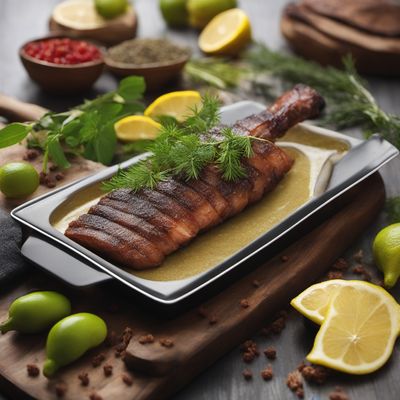
Ingredient
Perch, white
White Perch: A Delicate Freshwater Fish
White perch is a small fish with a silvery-white body and dark stripes along its sides. It has a delicate and flaky texture, and its flesh is white and tender. The flavor of white perch is mild and slightly sweet, with a hint of brininess. Its appearance is visually appealing, with its shimmering scales and streamlined shape.
Origins and history
White perch is native to the eastern coast of North America, from Nova Scotia to South Carolina. It is commonly found in freshwater lakes, rivers, and estuaries. The fish is highly adaptable and can thrive in a variety of habitats. White perch has been a popular food source for centuries and is enjoyed by recreational anglers and commercial fishermen alike.
Nutritional information
White perch is a good source of protein and omega-3 fatty acids. It also contains essential minerals such as calcium, phosphorus, and selenium. The fish is low in calories and fat, making it a healthy choice for those watching their diet. However, it may contain environmental contaminants, so it is recommended to consume it in moderation and from trusted sources.
Allergens
White perch may cause allergic reactions in individuals with fish allergies. It should be avoided by those with known fish allergies or sensitivities.
How to select
When selecting white perch, look for fish that have clear and bright eyes, shiny scales, and a fresh smell. The flesh should be firm and spring back when pressed. Avoid fish that have a strong or unpleasant odor, as it may indicate poor quality or spoilage. Opt for fish that are sustainably sourced and follow local fishing regulations.
Storage recommendations
To maintain the freshness of white perch, it should be stored in the refrigerator at a temperature between 32°F and 38°F (0°C and 3°C). Keep the fish wrapped in plastic wrap or place it in an airtight container to prevent it from drying out. Consume it within 1-2 days of purchase for the best quality.
How to produce
White perch can be caught by recreational anglers using fishing rods and reels. It can also be farmed in controlled environments. However, it is not recommended for amateur production due to the specific requirements of fish farming.
Preparation tips
White perch can be prepared in various ways, including baking, grilling, frying, and steaming. It pairs well with a variety of flavors and ingredients, such as lemon, garlic, herbs, and spices. The fish can be served as a main course or used in salads, tacos, sandwiches, and chowders. It is a versatile fish that lends itself well to different culinary preparations.
Substitutions
White perch can be substituted with other small freshwater fish such as yellow perch, crappie, or sunfish. These fish have a similar texture and flavor profile. However, the cooking time may vary, so adjustments may be needed in recipes.
Culinary uses
White perch is commonly used in regional dishes along the eastern coast of North America. It is often fried and served with tartar sauce or used in fish cakes. The fish is also popular in seafood boils, soups, and fish tacos. Additionally, it can be used in sushi or sashimi preparations.
Availability
White perch is commonly found in the eastern coast of North America, from Nova Scotia to South Carolina. It is also present in some inland lakes and rivers in the region. It is not widely available outside of its native range.


